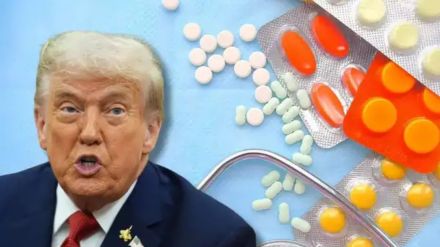By imposing a prohibitive 100% tariff on imports of “branded” and patented medicines, US President Donald Trump wants to force all suppliers of high-value proprietary medicines in the US to make them locally. He also wants home-grown elements of Big Pharma to shun offshoring of pharmaceutical manufacturing and research.
However, the stratospheric tariff is unlikely to help him meet the chief goal of gaining control over the global supply chains of medicines. Businesses rarely accept models forced on them; rather they find ways to bypass such hurdles, and grow autonomously. Global drug research and the business of manufacturing new drugs have already seen a fair amount of diversification in recent years, with China emerging as a key destination.
Also, the conventional Big Pharma of the West is turning risk-averse. New blockbuster drugs aren’t hitting the market as frequently as the existing ones losing patent cover.
ALSO READ
Indian companies’ domination of the US generics market
Indian companies have a 40% share in the US generics market by volume, while they account for just 13% by value. That shows how “valuable” the high-quality Indian generic medicines are to the US consumers, when it comes to curbing healthcare costs. India has nearly 500 manufacturing units approved by the US Food and Drug Administration, second only to the number of such units in the US itself (530).
Given all this, the country’s generic drugs business is largely immune to the hefty US tariff. In fact, even a 30-80% cut in prices of prescription drugs announced by Trump in May did not require Indian firms to cut their prices much.
Nevertheless, the tariff may still have an impact on many of them, considering the varying nature of their business models. Apart from direct generic exports to the US, several of them have another channel to access that market, as contract manufacturers for suppliers of branded/patented medicines.
India-made drugs reach the US market with labels belonging to firms based in the European Union (EU), Latin America, and elsewhere. Some of the larger Indian companies like Sun Pharma, Cipla, Dr Reddy’s, Lupin, and Biocon already have operational plants in the US, but they may still have to shift the entire production base for US supplies to that country to fully circumvent the 100% tariff. Ambiguity over the definition of branding could also prove to be a headache.
Can Trump’s policies jolt Indian pharma into action?
That said, Trump’s policies may serve as a blessing in disguise for the domestic drug-makers, by shaking them out of complacency. The immediate strategy must include acquiring a greater share from China in the manufacturing of newly launched drugs, and expanding the branded drugs business in various export markets. A great deal of value usurped by the brand owners and monopolistic drug distributors in the global markets could accrue to Indian firms, with reasonable levels of additional investments. Though fundamental drug research is still a tall order for India, at least a handful of companies which have developed a critical mass of R&D would do well to explore this area.
What awaits them is rich rewards from international patenting of their discoveries, in therapeutic areas where domestic and global market potentials converge. A revamped strategy is all the more important, especially because the public interest safeguards in India’s Patent Act, which have over the last two decades stood domestic industry in good stead, are being undermined under bilateral free trade pacts, with major partners like the UK, European Free Trade Association, EU, and even the US.
